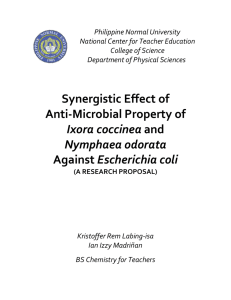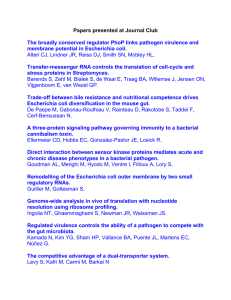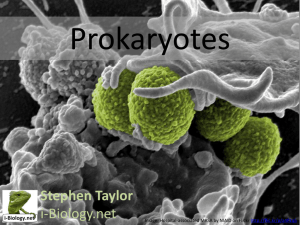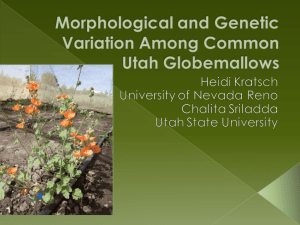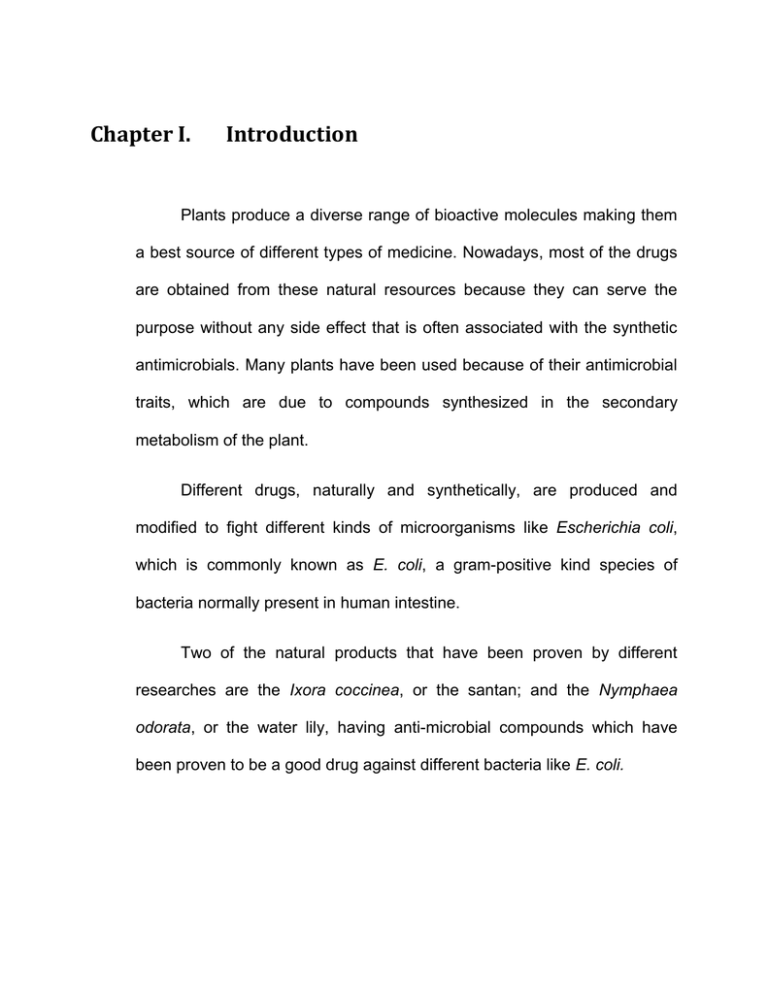
Chapter I.
Introduction
Plants produce a diverse range of bioactive molecules making them
a best source of different types of medicine. Nowadays, most of the drugs
are obtained from these natural resources because they can serve the
purpose without any side effect that is often associated with the synthetic
antimicrobials. Many plants have been used because of their antimicrobial
traits, which are due to compounds synthesized in the secondary
metabolism of the plant.
Different drugs, naturally and synthetically, are produced and
modified to fight different kinds of microorganisms like Escherichia coli,
which is commonly known as E. coli, a gram-positive kind species of
bacteria normally present in human intestine.
Two of the natural products that have been proven by different
researches are the Ixora coccinea, or the santan; and the Nymphaea
odorata, or the water lily, having anti-microbial compounds which have
been proven to be a good drug against different bacteria like E. coli.
Plants having an anti-microbial compounds when tested with the
bacteria are not that good compared to synthetic products but as they were
combined with other compounds of other plants, they work synergistically,
in which when they act together, their potency of fighting different
microorganisms increases compared to their individual potency.
Statement of the Problem
This study aims to determine the synergistic effect of anti-microbial
property of Ixora coccinea and Nymphaea odorata extracts against
Escherichia coli.
Specifically, this study seeks to answers the following questions:
1. Is Ixora coccinea and Nymphaea odorata extracts effective as an
anti-microbial against Escherichia coli?
2. Is there a synergistic effect between Ixora coccinea and
Nymphaea odorata extracts?
3. In what concentration of Ixora coccinea and Nymphaea odorata
extracts are good anti-microbial against Escherichia coli?
1|Page
Significance of the Study
Escherichia coli, commonly known as E. coli, is one of the
most common species of microorganisms that are normally present in the
human intestine that can cause diarrhea, blood poisoning that can even
lead to death. Anti-microbial drugs are usually at high cost and one of the
alternatives for anti-microbial drugs are plant extracts. Ixora coccinea
extract and Nymphaea odorata extract are good anti-microbial against
Escherichia coli. Combining the extracts of these plants would be able to
have synergistic effect, thus providing a more effective and more potent
anti-microbial drug against Escherichia coli. This study will also be helpful
in pharmaceutical realms that can yield to a powerful drug against any
other microorganisms.
Scope and Limitations
This research is a test about synergistic effect of Ixora coccinea and
Nymphaea odorata extracts against Escherichia coli and is limited in
ethanoic solvent; and in the bioassay that will be used.
2|Page
Definition of Terms
Anti-Microbial
- A plant substance that acts to inhibit the growth of harmful
microorganisms, or acts to destroy them.
Bioactive Molecules
- Molecules that can have an effect on living tissue
Bioassay
- A technique for determining the concentration or potency of a
substance such as a drug by measuring its effect on an organism
Potency
- Capacity to produce strong physiological or chemical effects
Synergism/Synergistic
- Working together of two or more drugs, muscles, etc., to produce
an effect greater than the sum of their individual effects
3|Page
Chapter II.
Related Literature
It is a well-known fact that medicinal plants are the resources of
promising drugs for many diseases. And also according to the international
respected health institute, the World Health Organization, one of the best
sources to obtain a variety of drugs would be the medicinal plants. 1
Scientists worldwide are exploring the possibilities of finding out and
utilizing pharmacologically active compounds from medicinal plants.
Screening of medicinal plants for their phytochemicals, antioxidant,
anticancer and antimicrobial properties is the prime concern for finding out
an effective phytochemically active principle.2
Scientific experiments since the late 19th century have documented
the antimicrobial properties of some plants, herbs, and their components. 3
The antimicrobial activity of plant oils and extracts has formed the basis of
many applications, including raw and processed food preservation,
pharmaceuticals, alternative medicine and natural therapies.4
1
(Santos et al., 1995)
Ayyanar and Ignacimuthu, 2008; Agbafor et al., 2011; Roy et al., 2011; Vinoth et al., 2011;
Mishra and Tripathi, 2011
3
(Shelef, 1983; Zaika, 1988; Alzoreky and Nakahara, 2003; Kumral and Sahin, 2003; Park et al., 2009)
4
Hammer KA, Carson CF, Riley TV, Antimicrobial activity of essential oils and other plant extracts.
J Appl Microbiol. 1999; 86: 985-990
2
4|Page
Ixora coccinea is a species of flowering plant in the Rubiacceae
family. It is a common flowering shrub native to Southern India, where its
name was derived which means Indian deity.5 It has been used in the past
as a therapy or a remedy to treat different kinds of diseases such as
wounds and inflamed tissues.6 It has been proven to have an anti-microbial
property and an anti-inflammatory property.7
Leaves, flowers, roots and stems of Ixora coccinea were utilized as a
medicine. Its leaves contained flavonols, kaemferol and quercetin,
proanthocyanidins, phenolic acids and ferulic acids. It is considered to be
antiseptic and anti-microbial,8 which was detected in ethanolic extract. The
effective inhibitory concentration of the extract against bacterial test
organisms was 125µg mL-1, beyond which the inhibitory activity declined
and the organisms started reviving from the effect of the antimicrobial
principle.9
Nymphaea, the genus of water lily takes its name from the Greek
word numphe, which means virgin of water nymphe. 10 It belongs to the
5
Wikipedia, February 2012. http://www.wikipedia.com/ixora_coccinea
Effect of Ixora coccinea flowers on dead space wound healing in rats / B S Nayak et al / Fitoterapia • vol. 70, no3,
pp. 233-236, 1999 / doi:10.1016/S0367-326X(99)00025-8
7
Antimicrobial activity of Ixora coccinea leaves / Fitoterapia Vol 74, Issue 3, April 2003, Pages 291-293
8
Stuart Xchange, 2012. http://www.stuartxchange.org/Santan.html
9
Arshad, and Shahid Hussain. Evaluation of anti-mycobacterial activity of garlic (Allium sativum) against
clinical isolates of non-MDR and MDR Mycobacterium tuberculosis. Planta Med. 2009; 75: 1073
10
Oladimeji, Ubulom, Akpabio, Etim and Nyong, 2008.
6
5|Page
family, Nymphaeaceae, which consists of six genera and seventy
species,11 and it grows in ponds, rivers, and sluggish streams.12
Water lily’s leaves and roots is an old fashioned herbal remedy
which is used to treat wounds, cuts and painful swellings.13 It can also be
used to treat coughs and tuberculosis.14
Different compounds such as tannins (tannic acids and gallic acids),
alkaloids (nymphaerine and nupharine) and glycosides (gardenolide and
myrictrin) which are antiseptic, astringent and antimicrobial have been
reportedly isolated from this plant.15
Our daily lives are closely intertwined with microorganisms, and the
health of our planet depends very much on their activities. 16 Some
microorganisms can be mutual to us but some were not.
One of the microorganisms that are very disadvantageous to us, a
microorganism that can cause food poisoning is Escherichia coli that
produce high level of toxins that can cause kidney malfunction, bloodpoisoning, diarrhea and can even lead to death.17 Different plant extracts
11
Trease and Evans, 1996
Odey and Kingdersley, 1993
13
Harvey and John, 1898
14
George, 2001
15
H.O. Oladimeji, P.M. Ubulom, E.I. Akpabio, I.E. Etim and E. Nyong, 2008. Larvicidal and Anti-Microbial Potentials
of Nymphaea odorata. Journal of Pharmacology and Toxicology, 3: 357-362
16
Microsoft ® Encarta ® 2009. © 1993-2008 Microsoft Corporation. All rights reserved.
17
Microsoft ® Encarta ® 2009. © 1993-2008 Microsoft Corporation. All rights reserved.
12
6|Page
are already been studied which is proven to kill this microorganism like C.
sativum.18
Plants are been investigated to better understand their properties,
safety and efficiency.19 Different studies determined that combinations of
plant extracts against pathogenic bacteria resulted synergistically.20
Individually, extracts of Ixora coccinea and Nymphaea odorata are
slightly not favorable anti-microbial extract against Escherichia coli; 21
similar to some plant extract like C. auriculata and C. quadrangularis which
is not good anti-microbial extract against Escherichia coli, but their
combined extract resulted synergistically.22
Tannins and flavonoids, which are said to be anti-microbial
compounds,23 can be found in the extract of Ixora coccinea and Nymphaea
odorata, which can be synergistic same as what happened to the extract of
C. auriculata and C. quadrangularis.24
Some of plants that were combined do not exhibit synergism, thus it
is not ideal to act together; some exhibit antagonism, which when they
interact, their potency decreases compared to their individual effectiveness
18
Toroglu, 2010. Journal of Environmental Biology
(Ellof, 1998; Nascimento et al., 2000; Mothana et al., 2009)
20
Natchimuthu Karmegan, Mani Jauakumar and Subbiah Karuppusamy,
19
21
H.O. Oladimeji, P.M. Ubulom, E.I. Akpabio, I.E. Etim and E. Nyong
22
Natchimuthu Karmegan, Mani Jauakumar and Subbiah Karuppusamy,
Lamikanra et al., 1990; Burapadaja and Bunchoo, 1995; Adesina et al., 2000)
24
Natchimuthu Karmegan, Mani Jauakumar and Subbiah Karuppusamy,
23
7|Page
like what happened to A. amara and A. marmelos against Escherichia
coli.25
This research tends to prove any synergistic effect of the antimicrobial property of Ixora coccinea extract and Nymphaea odorata extract
against Escherichia coli. Also, the solvent that will be used will be
assessed; on what solvent would the anti-microbial compounds of these
extracts be more potent against Escherichia coli.
25
Natchimuthu Karmegan, Mani Jauakumar and Subbiah Karuppusamy,
8|Page
Chapter III. Methodology
Phase 1 - Collection of Plant Samples
The plant samples will be collected in some parts of the Philippines, particularly
in Caloocan City for Ixora coccinea and Binan City, Laguna for Nymphaea
odorata. The collected sample will be verified at the Botany Division of National
Museum or at Bureau of Plant and Industry.
Phase 2 - Cleaning and Drying of Plant Samples
The collected plant samples will be washed and dried at the oven for 24 hours.
The leaves will be left inside the oven for 24 hours so that the moisture will be
gone and can not hinder in the extraction process.
Phase 3 - Extraction of Santan and Water Lily leaves
The leaves of santan and water lily will be pounded using a mortar and pestle.
Plant sample will be soaked in ethanol solvent for 48 hours. Solvents will be
removed through rotary vacuum evaporator and collected extract will be stored at
4oC in air tight bottles.
9|Page
Phase 4 - Anti-Microbial testing of Santan and Water Lily
Extracts
Antibacterial testing will be conducted in DOST-ITDI Standards and Testing
Division by disc diffusion method. The test was tested against Escherichia coli.
The plant extracts will be tested using organic solvent, Ethanol, in different
concentrations.
1. Santan in Ethanol
2. Water lily in Ethanol
3. 25% Santan and 75% Water Lily
4. 50% Santan and 50% Water Lily
5. 75% Santan and 25% Water Lily
This will determine which of the three extract concentrations is the most effective
anti microbial agent specifically against Escherichia coli
*The first two solvent will be the control samples.
10 | P a g e
Schematic Diagram
Phase 1
Collection of Plant
Samples
Phase 2
Cleaning and Drying
the Plant Sample
Ixora coccinea and
Nymphaea odorata will
be collected
Collected plant
samples will be
washed.
Plant samples will be
verified by the National
Museum or BPI
Plant leaves samples
will be dried in an oven
for 24 hours
Phase 3
Extraction of
Plant Samples
Phase 4
Anti Microbial
Testing
Plant leaves samples will be
pounded and will be soaked in
ethanol solvent for 48 hours
The extracts will be tested using
organic solvent, Ethanol, in
different concentration
Solvents will be removed through
rotary vacuum evaporator and
collected extract will be stored at
4oC in air tight bottles
Antibacterial testing will be
conducted in DOST-ITDI Standards
and Testing Division by disc
diffusion method. The test was
tested against Escherichia coli.
11 | P a g e

